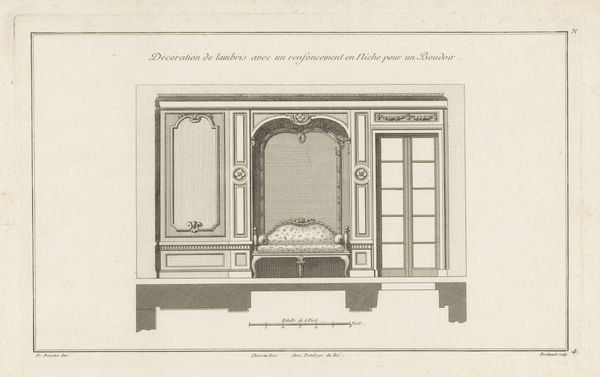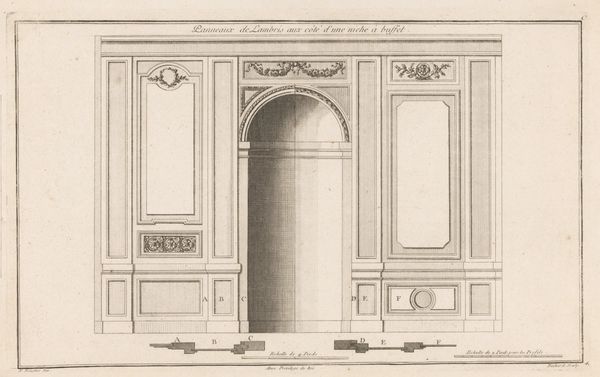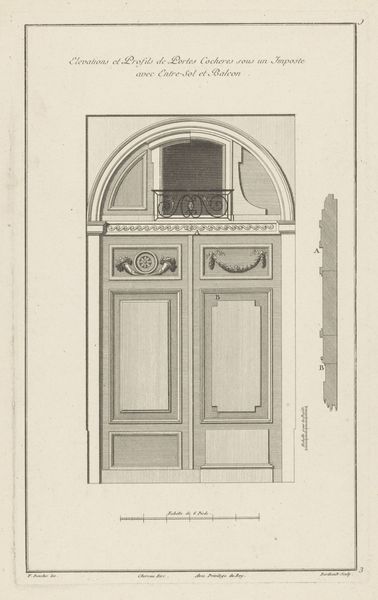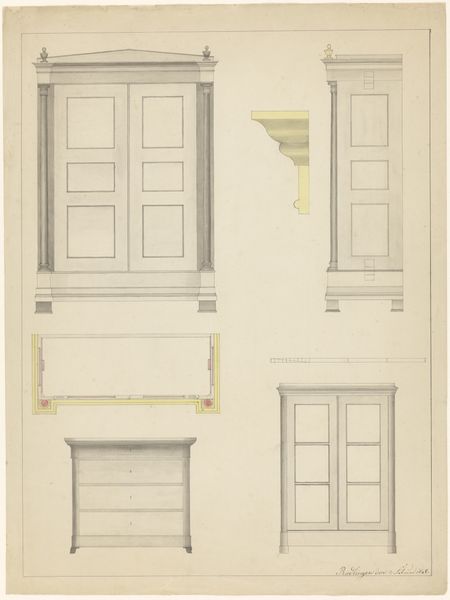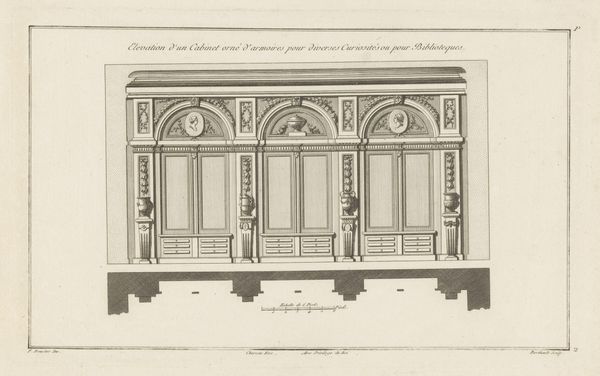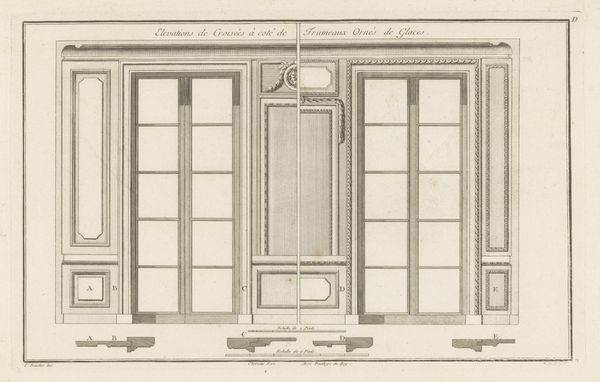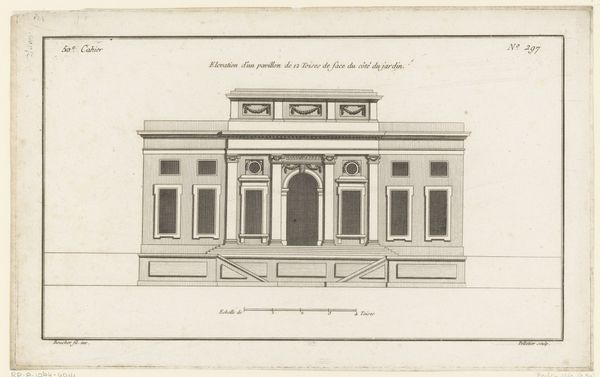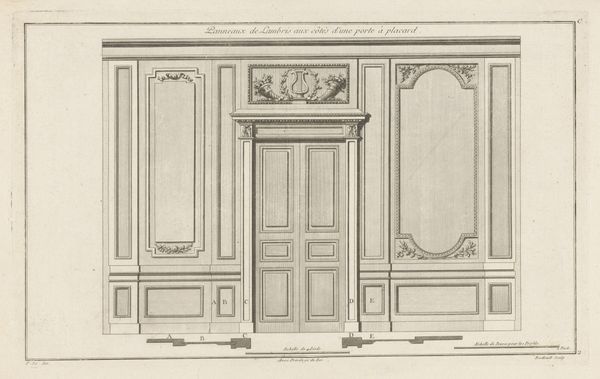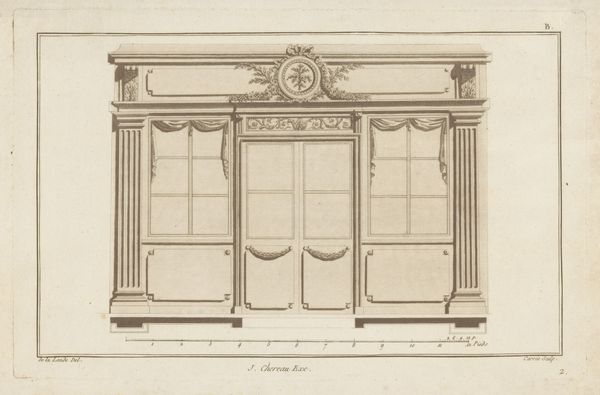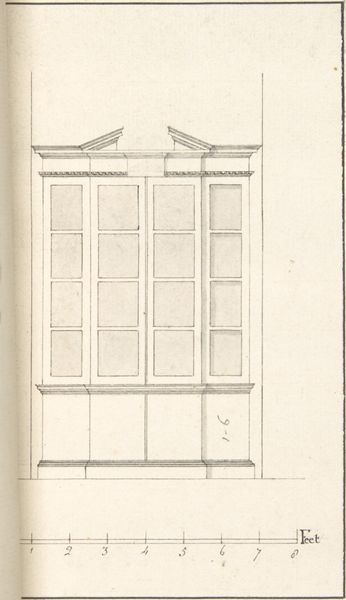
drawing, print, paper, engraving, architecture
drawing
neoclacissism
paper
engraving
architecture
Dimensions: height 221 mm, width 360 mm
Copyright: Rijks Museum: Open Domain
Editor: So, this print by Pierre Gabriel Berthault, titled "Betimmering met deur en kasten," from sometime between 1752 and 1794, is a detailed drawing of an interior wall with a door and cabinets. The level of detail makes me wonder about the intended purpose; was it simply documentation, or perhaps something more? What do you see in this piece? Curator: This print offers us a glimpse into the world of production and consumption during the Neoclassical period. Consider the materials involved – the paper, the ink, the engraved plate itself. These were commodities, objects of trade and value. This wasn’t merely documentation; it was a design proposal, intended to convince a patron of the beauty, and therefore the value, of such a detailed interior. It’s about demonstrating status. Editor: I hadn’t thought about it as a sales pitch! The architectural design itself, the symmetry and the classical ornamentation, is that also related to the materials in some way? Curator: Absolutely! The symmetry speaks to the control of materials. Precise cutting, shaping, and placement of stone, wood, and other resources all require skilled labor. Think about the labor conditions, the workshop hierarchy, the cost of training artisans capable of such refined work. These are all material conditions embedded in this image. The ornamentation itself indicates available resources and skills for the consumption, display, and circulation of capital within the privileged class. Editor: So, it's less about the aesthetic ideal of Neoclassicism and more about the material reality that made it possible? Curator: Precisely! This print isn’t just a drawing of a pretty room; it's evidence of the social relations involved in its creation, from the extraction of raw materials to the labor of skilled artisans, and ultimately, to the consumer who could afford such opulence. Editor: That's fascinating; I never considered the drawing itself as part of that material process. Curator: Reflecting on the work in these terms brings art history into much more meaningful social conversations. Editor: I completely agree; thanks for sharing your materialist perspective. It's given me a lot to consider!
Comments
No comments
Be the first to comment and join the conversation on the ultimate creative platform.

